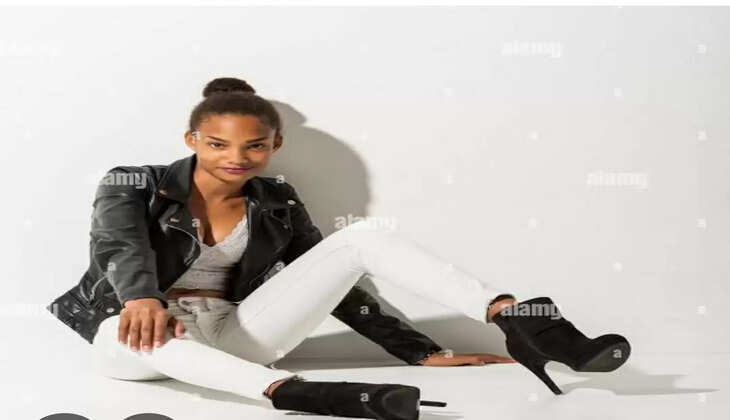Modern Youth Fashion
Feb 6, 2025, 15:34 IST

Key Aspects of Youth Fashion:
1. Streetwear & Casual Trends – Comfortable, stylish outfits like oversized hoodies, sneakers, and graphic tees dominate youth fashion.
2. Sustainability & Ethical Fashion – Eco-friendly brands, thrift shopping, and upcycled clothing are gaining popularity.
3. Influence of Social Media – Platforms like Instagram and TikTok play a crucial role in setting new fashion trends.
4. Diversity & Personal Expression – Young people embrace unique styles, mixing cultural influences and gender-fluid fashion.
5. Fast Fashion vs. Slow Fashion – While fast fashion remains popular, there is a growing shift towards conscious, long-lasting clothing choices.
Youth fashion constantly evolves, reflecting individuality, creativity, and the cultural shifts of each generation.
Model Youth Fashion: Trends, Influence, and the Future of Youth Style
Introduction
Model youth fashion represents the ever-evolving clothing styles, trends, and influences shaping how young people express themselves. Unlike past generations, today’s youth fashion is highly dynamic, influenced by social media, celebrity culture, sustainability, and technology. Youth fashion is not just about clothing; it is a form of identity, self-expression, and cultural representation.
In this article, we explore the key elements of model youth fashion, its historical evolution, major trends, and its impact on the fashion industry.
The Evolution of Youth Fashion
Youth fashion has changed drastically over the decades, with each era introducing new trends influenced by cultural, technological, and social factors.
1950s-1960s: Rock and roll culture introduced leather jackets, jeans, and rebellious styles influenced by icons like Elvis Presley and The Beatles.
1970s-1980s: Hippie fashion with bell-bottoms and tie-dye gave way to punk rock styles with leather, studs, and ripped jeans.
1990s: Streetwear gained prominence, with oversized clothes, sneakers, and sportswear becoming everyday fashion staples.
2000s-Present: Fast fashion, luxury streetwear, and sustainable clothing dominate the youth fashion landscape. Social media has become the primary driver of new fashion trends.
Key Trends in Model Youth Fashion
1. Streetwear and Casual Wear
Streetwear is one of the biggest influences in youth fashion today. It combines elements of sportswear, hip-hop, and urban culture, making it both comfortable and stylish. Popular streetwear brands like Supreme, Off-White, and Adidas continue to shape youth fashion. Essential pieces include:
Oversized hoodies and sweatshirts
Sneakers and chunky shoes
Graphic t-shirts and baggy jeans
Tracksuits and cargo pants
2. Sustainable and Ethical Fashion
With growing awareness of environmental issues, many young people are shifting towards sustainable fashion choices. This includes:
Thrift shopping: Buying second-hand clothes to reduce waste.
Eco-friendly brands: Supporting companies that use organic materials and ethical labor practices.
Upcycling and DIY fashion: Customizing old clothes to create unique styles.
3. Social Media and Digital Influence
Platforms like Instagram, TikTok, and Pinterest play a crucial role in setting youth fashion trends. Young people now follow influencers and celebrities to get inspiration for their outfits. Some major impacts include:
Viral fashion trends: Hashtags like #OOTD (Outfit of the Day) and #ThriftFlip drive new styles.
Fast fashion acceleration: Brands quickly produce styles that go viral on social media.
Digital fashion shows: Online platforms replace traditional fashion shows, making trends more accessible.
4. Gender-Fluid and Inclusive Fashion
Modern youth fashion is breaking traditional gender norms. Many brands now offer gender-neutral clothing, and young people are embracing unisex fashion. Some notable trends include:
Oversized shirts and relaxed-fit pants worn by all genders.
Androgynous clothing lines from brands like Gucci and Balenciaga.
Makeup and accessories becoming gender-inclusive.
5. Y2K and Retro Revival
Fashion trends from the early 2000s (Y2K fashion) are making a strong comeback among the youth. This includes:
Low-rise jeans and crop tops
Chunky platform sneakers
Bold neon colors and shiny fabrics
Mini skirts and baguette bags
Retro styles from the ‘80s and ‘90s, such as baggy jeans, leather jackets, and bucket hats, also continue to influence youth fashion.
6. Techwear and Futuristic Fashion
Techwear is a growing trend among youth who love futuristic, functional clothing. Inspired by cyberpunk aesthetics, techwear includes:
Waterproof jackets and utility vests
LED accessories and smart clothing
Functional backpacks with multiple compartments
Brands like Acronym and Nike ACG are leading the techwear movement.
The Impact of Youth Fashion on the Industry
Fast Fashion vs. Slow Fashion
Fast fashion brands like Zara, H&M, and Shein cater to the demand for affordable, trendy clothing. However, there is a rising backlash against fast fashion due to its environmental impact. Many young consumers are now supporting slow fashion, which focuses on high-quality, ethically produced garments.
Celebrity and Influencer Collaborations
Many fashion brands collaborate with influencers and celebrities to reach young audiences. For example, Nike’s partnership with Travis Scott and Adidas’ collaboration with Kanye West have resulted in iconic sneaker lines.
The Role of Fashion Weeks and Online Platforms
While traditional fashion weeks still set industry trends, online platforms like TikTok and YouTube have become just as influential in shaping youth fashion. Independent designers and small brands can now showcase their styles to a global audience without relying on major fashion events.
Conclusion
Model youth fashion is a dynamic and ever-changing field, influenced by culture, technology, and sustainability. Young people today have more power than ever to shape trends, with social media serving as a primary platform for self-expression. As the fashion industry continues to evolve, youth-driven trends will likely focus on inclusivity, sustainability, and digital innovation.
Fashion is no longer just about clothes—it’s about identity, values, and the future of self-expression.
